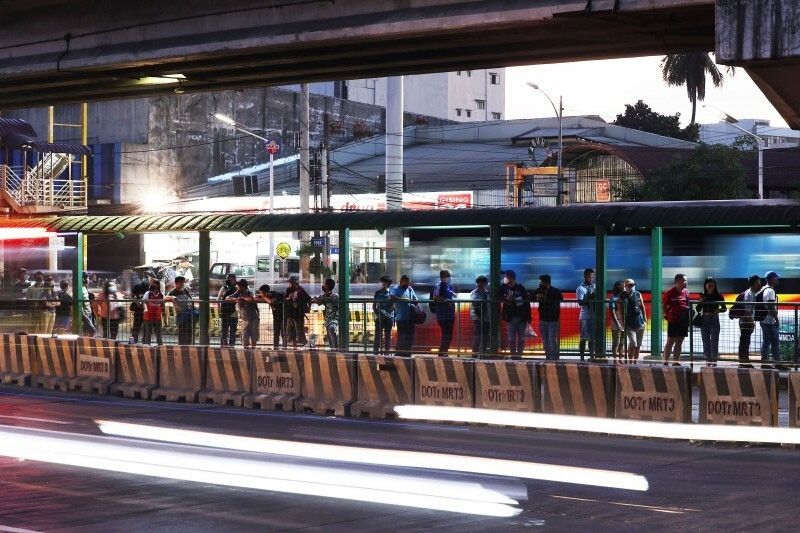DOH sees significant increase in COVID-19 cases

MANILA, Philippines — The Department of Health (DOH) is seeings a significant increase in COVID-19 cases and a possible peak that may reach as high as 2,000 daily cases in the National Capital Region (NCR) toward the end of July.
Health Undersecretary Maria Rosario Vergeire said the DOH has recorded a total of 3,198 new cases nationwide from June 14 to 20 at an average of 456 cases per day.
“Although we’re seeing a notable increase in the number of cases, we remain in the low risk case classification because we are still in the less than one per 100,000 population and average daily attack rate,” Vergeire said partly in Filipino at a virtual briefing.
At present, the daily average matches the level in February when the DOH recorded 466 cases per day.
In Metro Manila or NCR, the increase in cases started in mid-May, but the sharp increase was observed last week when the daily average rose to 200 with the positivity rate at 4.4 percent, said Vergeire.
“Previously we were recording less than 100 cases per day in NCR. Right now, we’re seeing almost 300 cases per day already,” she said.
The DOH also observed an increase in cases in the rest of Luzon and the Visayas, although the average daily cases remained less than 80. In Mindanao, the case trend is still low with daily cases averaging less than 40.
But Vergeire pointed out that as cases continue to rise, the national positivity rate also rose to 3.1 percent, which is similar to the rate in the first half of March.
In terms of hospitalization, she said more than half of the admissions are asymptomatic and mild cases.
“Severe and critical admissions since mid-March of this year remained below 1,000,” said Vergeire, noting that the slight increase in recent days is less than one percent of the total hospital admissions.
The national health care utilization rate is at 14.61 percent to 17.82 percent which is still classified as low risk, she added.
It is the same in the NCR, where no significant increase in severe and critical cases has been observed.
PRC ready for surge
Taking a cue from the DOH report, the Philippine Red Cross (PRC) said it was preparing for another surge of COVID-19 cases in Metro Manila.
“The PRC is prepared for the surge, with its 14 operational molecular laboratories across the country. The PRC also continues to support the government’s vaccination efforts through its 17 Bakuna Buses, 26 Bakuna Centers and 24 Bakuna Teams to the LGUs,” said PRC chairman Richard Gordon.
Gordon said Filipinos should get vaccinated and tested promptly for early detection and prevent further transmission of COVID-19, following the DOH’s report that cases increased significantly last week – 82 percent higher than the previous week.
He also noted that OCTA Research projects the daily cases of COVID-19 in Metro Manila to reach 1,000 per day by the end of the month or early July.
However, Health Secretary Francisco Duque III warned in a radio interview that COVID-19 cases in the NCR may reach as high as 2,000 by the middle or end of July.
Vergeire explained that this projection was based on scientific assumptions that included the entry of more transmissible subvariants of Omicron, waning immunity among the vaccinated, the drop in compliance with minimum public health standards (MPHS) and the continuing low uptake in booster shots.
Working on the assumption that the more transmissible subvariants of Omicron spread, she said the peak of the surge in cases will be expected in the middle of September.
“But if the entry of the more transmissible subvariant, plus immune escape and low (compliance with) MPHS and update booster still slow, we will have it (peak in cases) as early as the third week of July,” Vergeire said.
Nevertheless, the DOH is not expecting cases to reach the same number during the Omicron surge in January when the country posted as many as 34,000 cases a day nationwide and 17,000 cases a day in Metro Manila.
While the DOH cannot certainly predict when the next surge will happen, Vergeire said this could still be avoided if the people comply with MPHS and avail themselves of vaccination and boosters.
More subvariants
Yesterday, the DOH reported the detection of 32 more cases of the more transmissible Omicron subvariants in the country.
Vergeire said that of the 32 new BA.5 cases, 21 came from Region 6 (Western Visayas), four from Region 4-A (Cavite, Laguna, Batangas, Rizal and Quezon or Calabarzon), four from the NCR and three from Region 3 (Central Luzon).
This brings to 43 the total number of BA.5 cases nationwide, with 22 of the new cases manifesting only mild symptoms. Five were asymptomatic while the remaining five are still being verified.
“At the moment, exposure of individuals is still unknown and travel histories are being verified,” Vergeire said, but noted that nine of the cases in Western Visayas were traced to the same workplace.
With 30 of the latest cases of BA.5 being full vaccinated, 16 have already recovered, while 14 are in isolation. The status of the two others is still being verified.
Vergeire clarified that there is still no declaration of community transmission of the Omicron subvariants at this time.
Meanwhile, no additional BA 2.12.1 subvariants were detected in the latest genome sequencing. – Neil Jayson Servallos
- Latest
- Trending
































